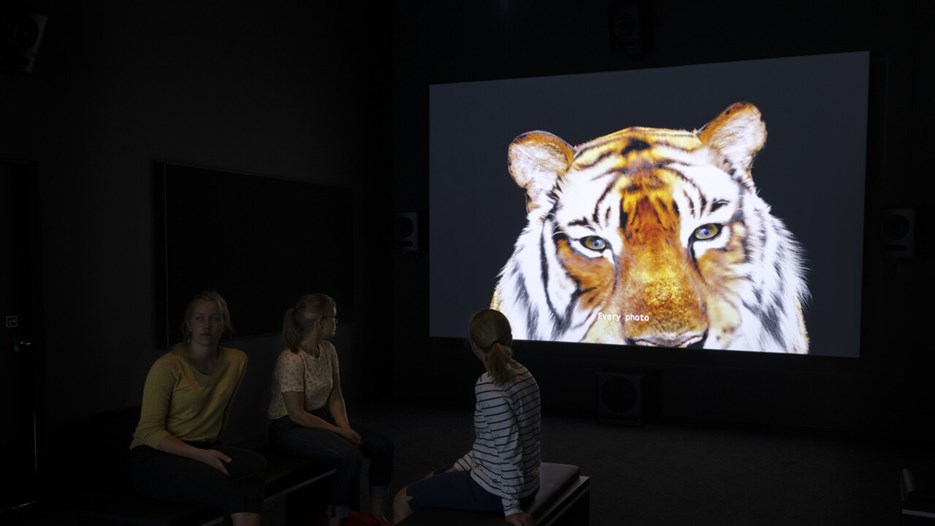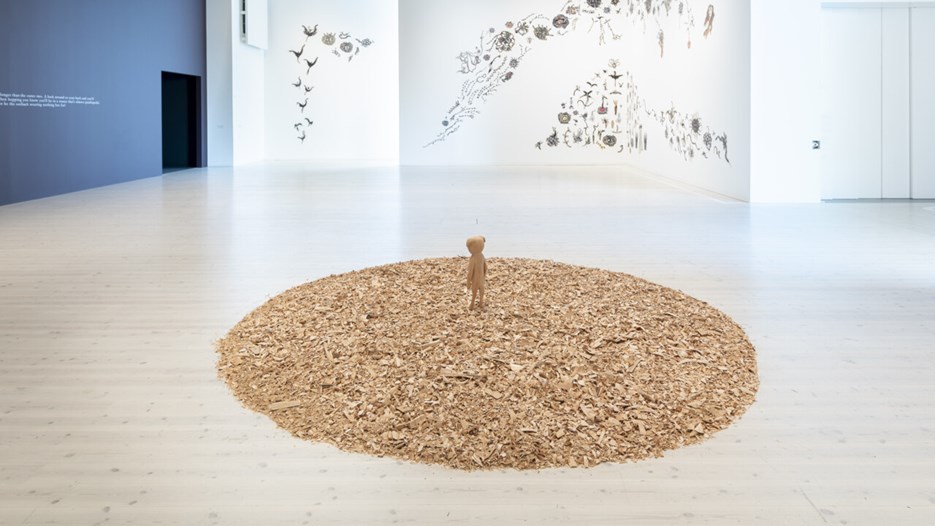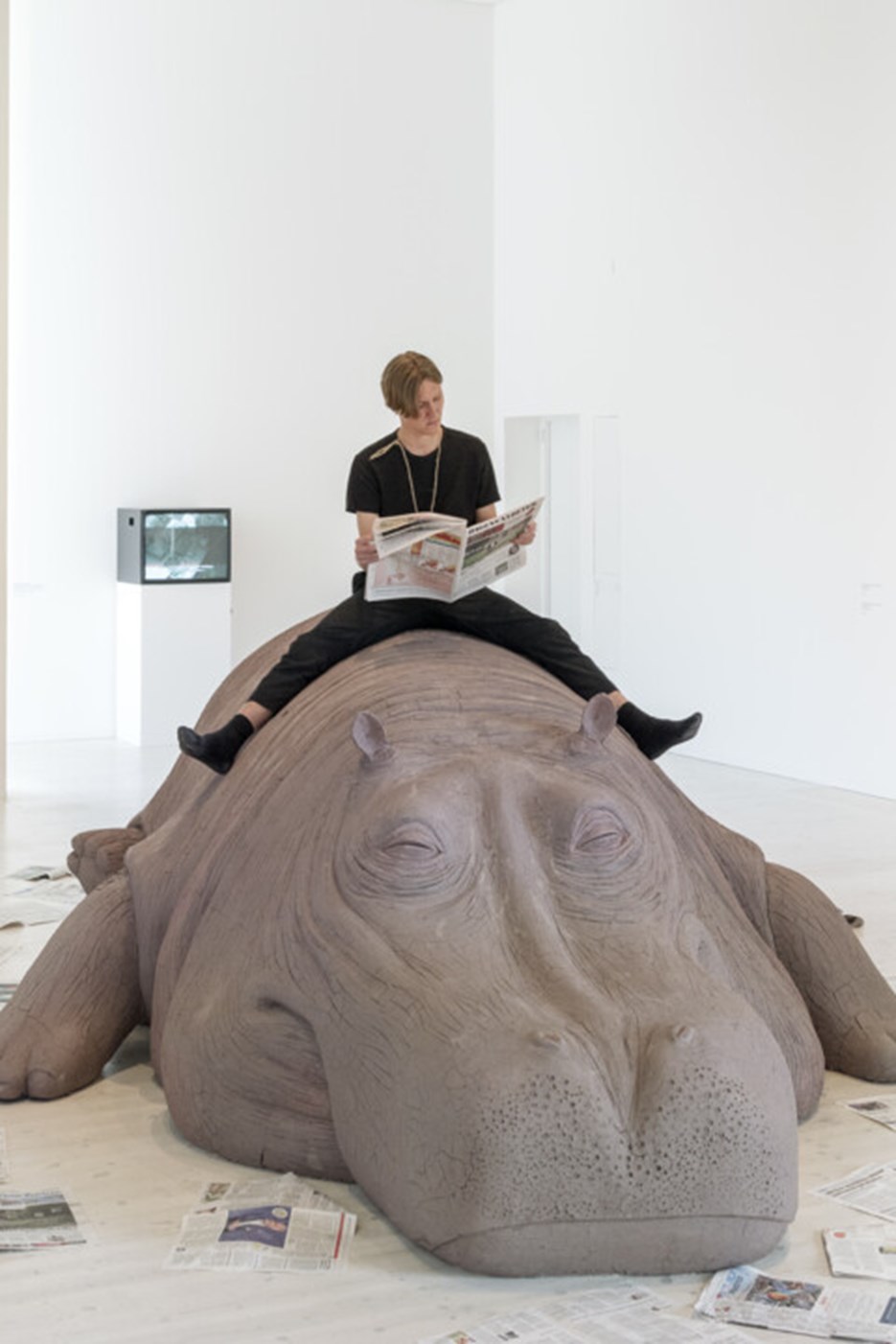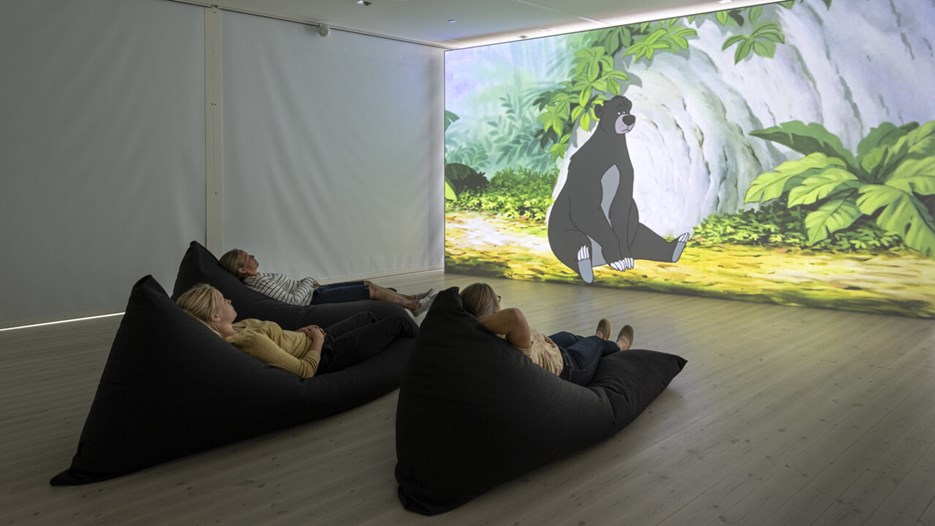Animalesque / Art Across Spieces and Beings, curated by Filipa Ramos and produced by Bildmuseet, has since the exhibition at Bildmuseet been shown at the BALTIC Centre of Contemporary Art in Gateshead, UK, 16 November 2019 – 16 March 2020.

From the exhibition Animalesque / Art Across Species and Beings at Bildmuseet 2019.

From the exhibition Animalesque / Art Across Species and Beings at Bildmuseet 2019.

From the exhibition Animalesque / Art Across Species and Beings at Bildmuseet 2019.

From the exhibition Animalesque / Art Across Species and Beings at Bildmuseet 2019.
Animalesque brings together an outstanding selection of artworks - film and video, drawing and sculpture, installation and sound art - that invite museum visitors to rethink the human position in the world, its relationship to all other life forms and to the various complex ecologies that bond beings together.
A growing awareness of living in an environmentally fragile planet led many artists to reconsider the role of art and in responding to current challenges. Many artists have been rethinking the relationship between humans and nature, the effects of changes to the earth's climate and the ways in which all species are caught together within complex causes and effects.
Participating artists are Allora & Calzadilla (USA/Cuba), Pia Arke (Greenland), David Claerbout (Belgium), Marcus Coates (UK), Mary Beth Edelson (USA), Simone Forti (Italy/USA), Luca Frei (Switzerland/Sweden), Pierre Huyghe (France), Carsten Höller (Germany/Sweden), Joan Jonas (USA), Annika Larsson (Sweden), Louise Lawler (USA), Britta Marakatt-Labba (Sweden), Amalia Pica (Argentina/UK), Ho Tzu Nyen (Singapore) and Paloma Varga Weisz (Germany).
In tandem with the exhibition and throughout its duration there will be a programme of live events featuring talks with artists and various experts, as well as film screenings and discussions that further expand and develop the topics of the show.
Animalesque has been produced by Bildmuseet and is curated by London-based writer Filipa Ramos. Interested in the intersection of art, cinema and animal studies, Ramos is the Editor in chief of art-agenda and co-curator of Vdrome. She is a lecturer at Kingston University and Central Saint Martins, London, and at Institut Kunst, Basel. Assisting curator: Anders Jansson, Bildmuseet.
Your feet are now longer covered in orange fur and have three toes, the middle one being far longer than the other two. Look around at your back and you'll see a large lower body with a long thick tail attached to it. You're still somewhat bipedal but when hopping you know you'll be in a stance that's almost a quadruped. You've become a kangaroo.
From Annika Larsson's work Animal
Animalesque is a group exhibition that looks at how artists have been bringing people and nature closer, creating unique bonds that unite humans with other animals. The show presents 17 artists from various generations, backgrounds and contexts whose work ranges across different media, including film and video, drawing and sculpture, installation and sound.
Portraying human-animal relations across large-scale video installations and sculptures, intricate wall collages, involving environments, as well as both historic and present-day artworks, the exhibition explores the crucial issues concerning environmental fragility and ecological peril in the current age of ecological crisis. Yet, it avoids catastrophic messages by presenting striking, engaging visions and gestures that appeal to empathy, regeneration and learning.
The suffix "esque" refers to a mode of resemblance, of a way of being in the style of something. To be Animalesque is to resemble an animal, to be animal-like, to be able to potentially become another animal. The exhibition features artworks that soften the distinction between humans and other species, reassessing the wider natural sphere in which all living forms are interconnected. These works also look at the ways in which the possibility of becoming other (becoming animal-becoming different-becoming new) establishes an engaged, tolerant and compassionate mode of existing in the world - a political and social predisposition to accept and engage with others.
Animalesque proposes practical, poetic, politic and sensorial experiences of becoming other by considering the transformations that such a process may generate in our bodies, minds, and in our cognitive, emotional and perceptive systems.
The exhibition is populated by sounds and calls - its audio dimension being as important as its visual components. It also features visually impacting, immersive artworks (films, videos, installations) that evolve in time and space, creating dynamic and compelling experiences. There will be animals in the exhibition, but no furs nor skins-a detachment from the traditions of exhibiting life forms and their fetishizing of the bodies of other species.
Theoretically located at the intersection of philosophy and ethics, critical theory, postcolonialism, feminist and gender studies, film criticism, as well as life sciences and ecocriticism, the exhibition offers itself as a meeting point in which various disciplinary and theoretical positions meet around a commitment to change. Assuming that in order for change to take place, change needs to happen within ourselves, the exhibition presents itself as an invitation to embrace otherness with ourselves: to become other, not by mimicking otherness but by internally experiencing what it means to exist in another way: in a different gender, skin colour, age, species.
The show also proposes that art is leading the humanities to gradually open itself to a system of poetical, critical and theoretical thinking and generate knowledge across species and beings.
Animalesque exists and unfolds organically. It has multiple, open entry and exit points without a specific beginning or end. The frontal logics of conventional exhibitionary systems - of being in front of - opens itself to a site of the inside, of the within. The transformative proposal of the show is triggered by its various accesses, all of which are made through immersive environments that disrupt conventional perceptions of space and induce a sense of becoming other, of being in another body by playing with lights, movement and darkness.